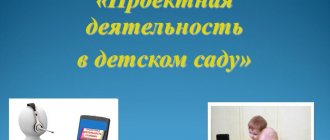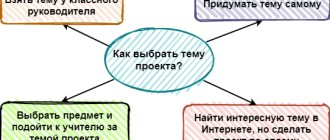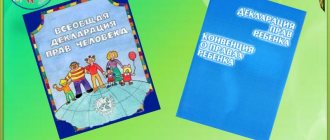The use of multimedia presentations in the correctional work of a speech therapist teacher
Korcheganova Galina Borisovna
The use of multimedia presentations in the correctional work of a speech therapist teacher
The use of multimedia presentations in correctional work
speech therapist teacher.
In recent years, significant transformations have been taking place in the preschool education system, caused by changes in the scientific, methodological and material base for the training and upbringing of preschool children. One of the important conditions for renewal is the use of new information technologies, primarily computer ones. This allows, on the one hand, to increase the efficiency of the educational process, on the other hand, to apply an individual approach to a greater extent in the process of training and education (research by V. P. Bespalko, Yu. B. Zelenskaya, O. I. Kukushkina)
.
New information technologies, without any doubt, can be applied to children with speech disorders. One of the current directions for introducing information technologies into the work of a speech therapist teacher is the use of multimedia (electronic)
presentations , which make it possible to create a visual effect in the classroom, increase motivational activity, and contribute to a closer relationship between the speech therapist teacher and parents .
What is a children's electronic presentation ?
Children's electronic (
multimedia ) presentation - a colorful educational book made by an adult (teacher, parent)
with realistic pictures, voiced, decorated with animation, inserts of educational videos.
Advantages of electronic presentations over traditional methods.
1. The presentation contains an educational type of information that is understandable to preschoolers; Forms a system of mental images in children.
A child with his visual-figurative thinking understands only that it is possible to simultaneously view, hear, act or evaluate the action of an object. That is why it is so important when teaching a preschooler to turn to open channels for obtaining information.
Multimedia presentations make it possible to present training and developmental material as a system of vivid supporting images filled with comprehensive structured information in an algorithmic order. In this case, various channels of perception are activated, which allows information to be stored in children’s memory not only in factual, but also in associative form.
2. The computer allows you to simulate life situations that cannot be
or difficult to see in everyday life.
For example, how to show a child the process of launching a rocket or the work of a potter ?
3. Computer capabilities allow you to increase the amount of information offered for
familiarization with the material. Many mothers note that this significantly
Children's interest in knowledge increases.
4. The use of new unusual methods of explanation and reinforcement, especially
in a playful way, increases involuntary, and also helps to develop
voluntary attention of children.
5. All parents notice how children like to ask repeatedly about one thing and
same, read “a hundred times”
the same fairy tale. But don’t get irritated:
preschoolers the same program material should be repeated
many times!
favorite presentation himself as many times as he likes.
if he wants, he can repeat words after the author, learning them by heart;
surprise adults with the amount of knowledge acquired independently.
6. By mastering children's electronic encyclopedias, preschoolers are active. Due to high dynamics, material is effectively absorbed, memory is trained, vocabulary is actively replenished, imagination and creative abilities are developed. By mastering children's electronic encyclopedias, preschoolers are active. Due to high
dynamics, the material is effectively absorbed, memory is trained, vocabulary is actively replenished, imagination and creative abilities are developed.
The use of multimedia presentations in correctional and speech therapy work
In the use of multimedia presentations by a speech therapist teacher, one can highlight the following advantages:
— information capacity;
- availability;
— visibility;
- emotional appeal;
- multifunctionality.
Presentation materials can be used to automate set sounds, differentiate the acoustics of close sounds and graphically similar letters, develop phonemic perception, elementary and complex forms of phonemic analysis and synthesis, word formation skills, inflection, development of coherent speech and cognitive abilities, mastery of lexical topics, etc. d.
Thanks to the sequential appearance of images on the screen, children are able to complete the exercises more carefully and fully. The use of animation and surprise moments makes the correction process interesting and expressive. Children receive approval not only from the speech therapist, but also from the computer in the form of prize pictures accompanied by sound design.
A harmonious combination of traditional means with the use of presentations in the Power Point program can significantly increase children’s motivation to study and, therefore, significantly reduce the time to overcome speech disorders.
From experience working with presentations
We have developed educational presentations for children , which we use in frontal classes, on all lexical topics.
The overwhelming majority of presentations are photographic slides accompanied by riddles.
The use of photographs forms in preschoolers the most realistic idea of the subject. And a riddle in poetic form not only contributes to the development of logical thinking, but is also stored in memory.
We also developed presentations for automation and differentiation of sounds. Moreover, when creating them, we tried not to use visual material with mixed or often disrupted sounds (in accordance with the methodological recommendations of M. F. Fomicheva)
.
Presentations on lexical topics, as well as presentations for the formation of sound pronunciation, are offered to reinforce the material for parents for home viewing. If conditions permit, it is advisable to work with presentations to activate the vocabulary on the front, and to automate the delivered sounds - in individual lessons.
Summarizing all of the above, we believe that the use of computer technology can become another effective way to form correct speech and correct its deficiencies in preschool children, and also helps to increase the level of professional competence of a speech therapist teacher .






